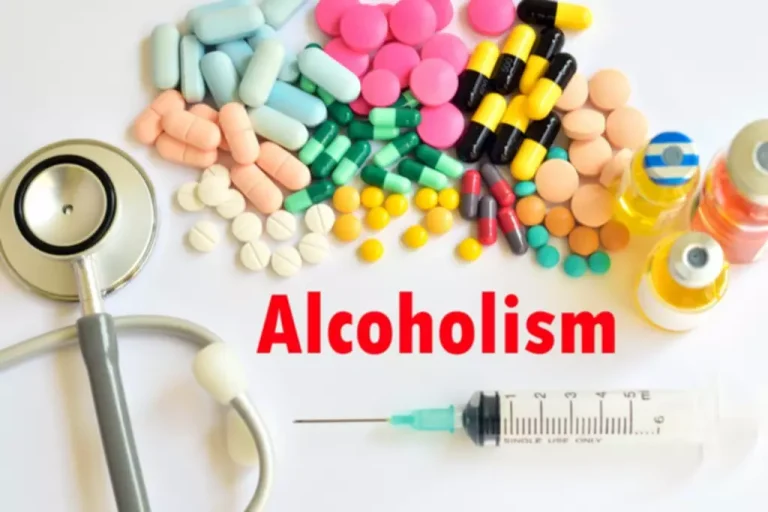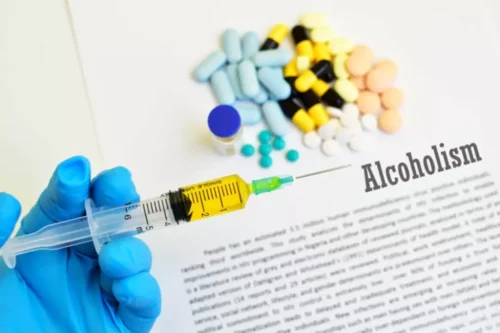Benzodiazepine Withdrawal: Symptoms, Timeline, and Treatment

Some studies indicate that long-term recovery success depends significantly on continuous care and support. These symptoms can begin a few hours to days after cessation and may persist for weeks to months. The severity of these symptoms is often influenced by the dosage, duration of use, and individual’s pre-treatment psychiatric condition. Our state-specific resource guides offer a comprehensive overview of drug and alcohol addiction treatment options available in your area. It is recommended to Substance abuse consult with a medical professional before beginningthe detox process.
- In 2016, estimates suggest that about half a million people in the United States misused sedative drugs.
- American Addiction Centers (AAC) has caring staff ready to help you day and night via our free, confidential phone line at .
- Symptoms that are not satisfactorily reduced by codeine phosphate can be managed with symptomatic treatment as required (see Table 3).
- However, there is still a possibility of severe reactions and withdrawal symptoms.
- Withdrawal typically begins 1-2 days after the last dose, and continues for 2-4 weeks or longer.
Table 6
Benzo withdrawals can be severe, and life threatening complications can occur. A healthcare professional should supervise benzo withdrawal to help monitor and manage the symptoms. There are three possible phases for benzo withdrawals, each with an estimated timeline.
Toggle Days 8 – 14:
As we reflect on the journey of benzodiazepine withdrawal, it’s clear that it encapsulates more than the challenge of overcoming physical and psychological dependence. It’s a testament to the human capacity for endurance, the pursuit of well-being, and the transformative power of comprehensive care. For those embarking on or navigating through the withdrawal process, remember you are not alone, and with the right support and resources, recovery is within reach. Benzodiazepines are a class of medications known as tranquilizers, commonly prescribed for anxiety, insomnia, seizures, and other conditions. They enhance the neurotransmitter GABA’s effect in the brain, which results in sedative, hypnotic (sleep-inducing), anxiolytic (anti-anxiety), anticonvulsant, and muscle relaxant properties.
- This timeline, marked by various phases and many potential symptoms, underscores the importance of a tailored and medically supervised withdrawal plan.
- While they can quickly relieve symptoms of anxiety and panic, these drugs pose a high risk of dependence.
- This should be taken into consideration in planning treatment involvement.
- Withdrawal symptoms may vary from person to person, although there are some common symptoms.
- After withdrawal is completed, the patient should be engaged in psychosocial interventions such as described in Section 5.
- They help individuals recognize triggers and develop coping mechanisms to prevent relapse.
Long-Term Treatment for Benzodiazepine Withdrawal
This is because inconsistent use doesn’t pose the same risk of dependence or withdrawal. These therapeutic interventions are critical as they target not only the addiction but also the conditions that led to benzodiazepine use, such as anxiety and insomnia, thereby tackling the root of the dependency. Moreover, a phenomenon referred to as benzodiazepine-induced neurological dysfunction has been identified. Patients with this condition experience long-term neurological complications that can persist even after discontinuation of the drug.
- In severe cases, withdrawal can lead to life-threatening conditions such as delirium and grand mal seizures.
- Conversely, those who have used benzodiazepines for a shorter period may experience a less severe withdrawal phase.
- During this process, medical professionals may prescribe medications off-label, such as mood stabilizers or anticonvulsants, to alleviate withdrawal symptoms.
- Severe symptoms and reactions can occur, and working with a professional can help a person avoid or manage these symptoms.

Treatment guidelines recommend a gradual tapering of benzodiazepines to mitigate withdrawal https://ecosoberhouse.com/ symptoms effectively. Generally, withdrawal symptoms can manifest within 24 hours post-cessation. Symptoms from short-acting benzodiazepines tend to appear sooner and may be more intense compared to those from longer-acting ones, which remain in the body for an extended period, delaying the onset of withdrawal.

It is crucial to tailor the withdrawal and recovery process to individual needs, taking into account factors such as dosage, duration of use, and pre-existing psychiatric conditions. Supervised tapering combined with CBT and ACT offers a comprehensive approach to managing withdrawal and promoting long-term cessation of benzodiazepine use. Severe withdrawal symptoms, such as seizures and delirium, necessitate medical intervention, often in an inpatient setting for those with high dosage or prolonged use histories.
Tapering changes
The journey to recovery following benzodiazepine withdrawal can be complex, with both challenges and milestones. Individuals who have successfully discontinued benzodiazepines often face a varying prognosis, with the potential for relapse and the need for ongoing management strategies. Studies have shown that symptoms may persist for months or even years post-discontinuation, emphasizing the importance of a supportive long-term recovery plan. Acute opioid withdrawal is followed by a protracted withdrawal phase that lasts for up to six months and is characterised by a general feeling of reduced well-being and strong cravings for opioids.
General Health

As above, provide 20mg diazepam every 1-2 hours until symptoms are controlled. In cases of severe dehydration, provide intravenous fluids with potassium and magnesium salts. Benzodiazepine, benzodiazepine withdrawal management or benzo, withdrawal happens when a person suddenly stops taking benzodiazepine drugs, which doctors do not recommend. The withdrawal symptoms, which vary in severity, typically begin within 24 hours and may last from a few days to a few months. Withdrawal symptoms can occur after as little as one month of use, even on small, therapeutic doses. Among people taking benzodiazepines for longer than six months, about 40% experience moderate to severe withdrawal symptoms when they quit suddenly.
Factors Influencing the Withdrawal Timeline
Dr. Thankachen sees patients with an array of disorders, including depression, bipolar illness, schizophrenia, anxiety, and dementia-related problems. After detox, ongoing treatment, often involving behavioral therapies like cognitive-behavioral therapy, is crucial to address the psychological aspects of addiction and prevent relapse. The intensity and duration of withdrawal are also impacted by the user’s history of drug dependency. A family history of substance abuse can prolong the withdrawal timeline. In fact, they can vary in severity and type from day to day or even within a single day.
- It’s a process that can lead to various physical and psychological symptoms due to the body’s dependence on the drug.
- The primary difference between these drugs is the length of time they stay active in the body.
- We can help you find the treatment you need to reclaim control in your life once and for all.
- Don’t wait— reach out today to take the first step toward taking control of your life.
- Read on to learn more about benzodiazepine withdrawal, including the signs, how long it lasts, and how to get support with tapering off safely.
- Patients who repeatedly relapse following withdrawal management are likely to benefit from methadone maintenance treatment or other opioid substitution treatment.
- Stopping benzodiazepines all at once can be dangerous, so your doctor will likely guide you through a tapering regimen that involves gradually reducing your dose over time.
Navigating Long-Term Recovery After Benzodiazepine Withdrawal
The dose must be reviewed on daily basis and adjusted based upon how well the symptoms are controlled and the presence of side effects. The greater the amount of opioid used by the patient the greater the dose of codeine phosphate required to control withdrawal symptoms. Symptoms that are not satisfactorily reduced by codeine phosphate can be managed with symptomatic treatment as required (see Table 3). Research showed that 40% of people taking benzos for longer than 6 months experienced moderate-to-severe withdrawal symptoms.
